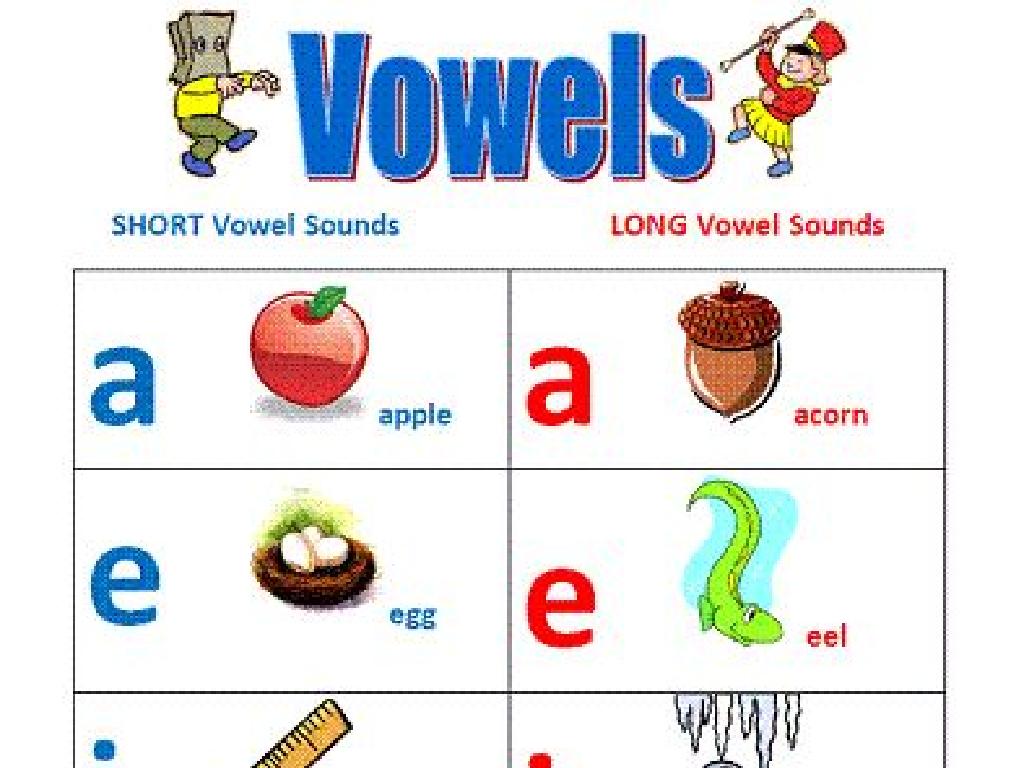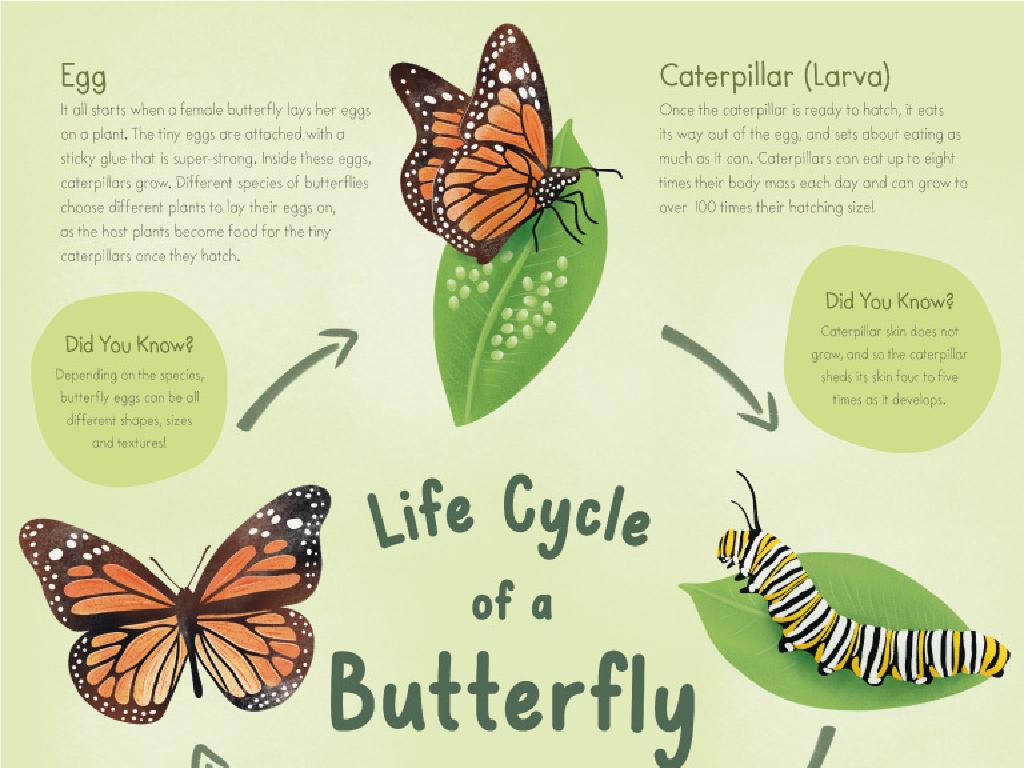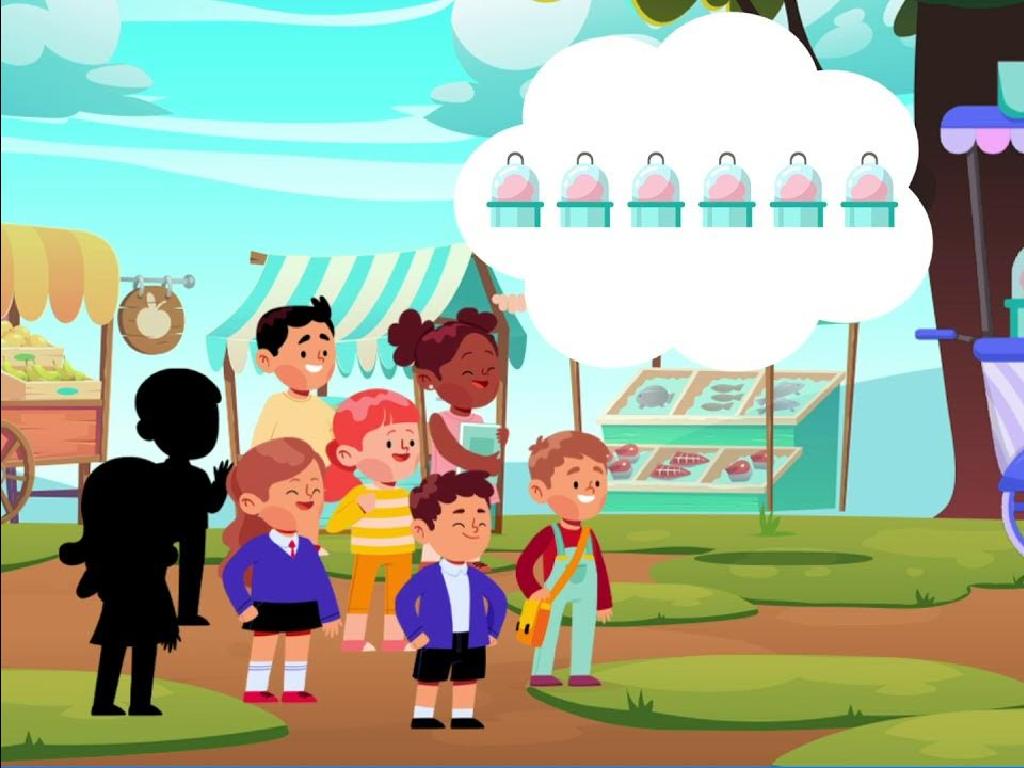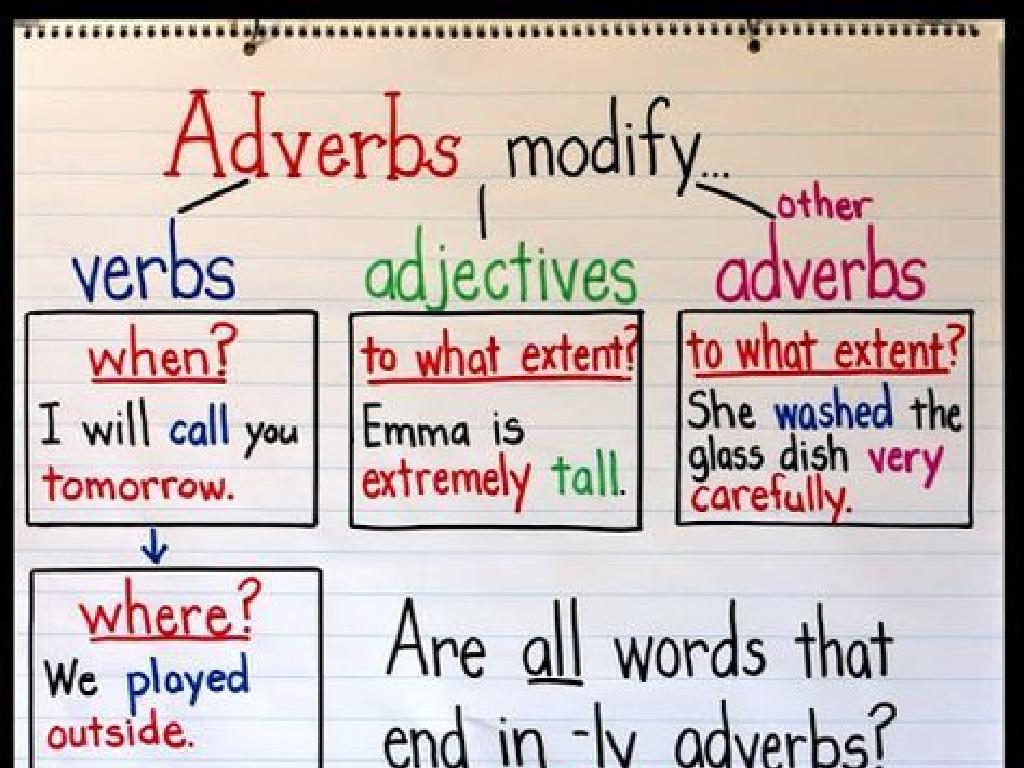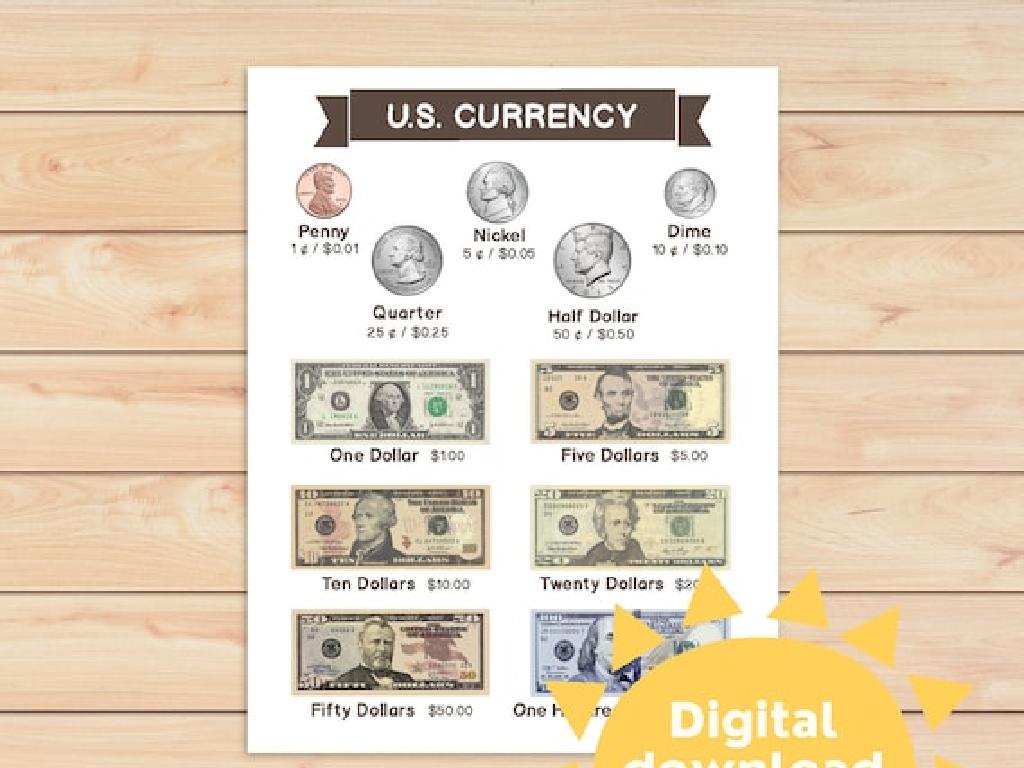Multiply One-Digit Numbers By Two-Digit Numbers Using Area Models I
Subject: Math
Grade: Third grade
Topic: Two-Digit Multiplication
Please LOG IN to download the presentation. Access is available to registered users only.
View More Content
Welcome to Multiplication: Small and Big Numbers!
– Explore multiplication basics
– Multiply one-digit by two-digit numbers
– Use area models to visualize 3 x 14 as 3 groups of 14
– Understand multiplication as grouping
– Think of multiplication as adding groups of the same size
– Discover why multiplication is powerful
– Multiplication helps us solve problems faster than addition
|
This slide introduces third graders to the concept of multiplication as a method for combining multiple groups of the same size. Start by explaining multiplication as an advanced form of addition that is more efficient. Demonstrate with an area model how to multiply a one-digit number by a two-digit number, breaking it down into simpler steps. Emphasize the importance of multiplication as a fundamental skill in math that makes problem-solving quicker and easier. Encourage students to think of real-life scenarios where multiplication is used, such as calculating total items in packages or total cost of multiple items. Provide examples and practice problems to solidify their understanding.
Understanding Multiplication
– Multiplication as repeated addition
– It’s like adding the same number over and over!
– Example: 3 x 4
– Same as 4 + 4 + 4. Three groups of four!
– Multiplication speeds up counting
– Instead of counting one by one, we can count quicker!
|
This slide introduces the concept of multiplication to third-grade students as a method of repeated addition, which is a foundational building block for understanding two-digit multiplication. Start by explaining that multiplication is a shortcut for adding the same number multiple times. Use the example 3 x 4 to show that it’s the same as adding the number 4 three times. Emphasize that multiplication helps us count faster than adding one by one. Encourage students to think of multiplication as groups of numbers, which will later help them grasp area models for larger numbers. Have them practice with simple examples and confirm their understanding by asking them to convert small multiplication problems into repeated addition.
Multiplying with Area Models
– Break down larger numbers
– Split 12 into 10 and 2 for easier multiplication
– Example: 4 x 12 with area model
– 4 groups of 12 can be shown as an area model
– Visualize multiplication
– Area models turn abstract numbers into visual blocks
– Practice with different numbers
|
This slide introduces students to the concept of using area models for multiplication, which helps in visualizing and understanding the process. Start by explaining how to break down larger numbers into tens and ones to simplify multiplication. Use the example of 4 x 12 to show how to create an area model, with one dimension representing the single-digit number and the other representing the broken down two-digit number. Emphasize the visual aspect of area models, as it allows students to see the product of the numbers. Encourage students to practice with different numbers to solidify their understanding. Provide additional examples and guide them through creating area models for these examples.
Multiplying with Area Models
– Step-by-step area model creation
– Draw a rectangle, divide it based on place values, fill in values, and add areas.
– Area models simplify multiplication
– They break big problems into smaller, manageable parts.
– Practice: Building an area model
– Use an example: Multiply 13 x 5 together using an area model.
|
This slide introduces the concept of using area models to multiply one-digit numbers by two-digit numbers. Start by explaining the steps to create an area model: drawing a rectangle, dividing it according to the place values of the two-digit number, and filling in the corresponding values. Emphasize how area models help in breaking down a complex multiplication problem into smaller, more manageable parts, making it easier for third graders to understand and solve. During the practice activity, guide the students through an example, such as multiplying 13 by 5, and encourage them to build their own area models. Provide additional examples for students to work on individually or in groups, and be ready to assist any student who needs help.
Let’s Multiply: Using Area Models
– Example: 3 x 24 using an area model
– Visualize 3 groups of 24 in a rectangle divided into parts
– Break down 24 into 20 and 4
– 20 is 2 tens and 4 is 4 ones, easier to multiply
– Multiply 3 by 20 and 3 by 4 separately
– 3 groups of 20 is 60, and 3 groups of 4 is 12
– Add the two products for the final answer
– 60 (from 20s) plus 12 (from 4s) equals 72
|
This slide introduces students to the concept of using area models for multiplication, which helps in visualizing the process. Start with an example like 3 x 24, and show how to break down the two-digit number into tens and ones. This simplifies the multiplication as students can easily multiply single-digit numbers. After calculating the separate products, guide students to add them together to find the final answer. Emphasize that this method is a systematic approach to handle larger numbers by breaking them into smaller, more manageable parts. Encourage students to practice with different numbers to gain confidence in this method.
Practice Time: Multiplying with Area Models
– Let’s solve multiplication problems
– Remember our multiplication tips
– Break numbers into tens and ones, use a grid to multiply each part
– Partner up: Multiply 5 x 32
– Use an area model to find the product of 5 and 32
– Share your area model with the class
– Explain your model and how you got the answer
|
This slide is designed for a collaborative classroom activity where students practice multiplying one-digit numbers by two-digit numbers using area models. Begin by solving a few problems together as a class to demonstrate the process. Emphasize tips such as breaking down the two-digit number into tens and ones and using a grid to multiply each part separately. Then, have students pair up to solve the problem 5 x 32 using an area model. Encourage them to discuss their strategies with their partner and ensure they understand each step. Afterward, ask some pairs to share their area models and explain their thought process to the entire class. This activity will help solidify their understanding of multiplication and the use of area models. Provide guidance and support as needed, and prepare to offer additional examples if students require more practice.
Multiplication Games: Learning Can Be Fun!
– Play Multiplication Bingo
– Engage in a Multiplication Race
– Who can solve 12 x 3 the fastest?
– Challenge with Multiplication Flashcards
– Use flashcards to quiz each other on problems like 4 x 15
– Share and Celebrate Correct Answers
|
This slide introduces interactive games to help third graders practice multiplying one-digit numbers by two-digit numbers. Multiplication Bingo involves students marking spaces on a bingo card as they solve multiplication problems called out by the teacher. In Multiplication Race, students compete to solve problems like 12 x 3 the fastest, promoting quick thinking and recall. Flashcards are a classic tool for practice; students can quiz each other on problems such as 4 x 15. Celebrate correct answers to build confidence. These activities make learning multiplication engaging and help reinforce the concept of area models in a fun, competitive way. Prepare different sets of problems for each game to cater to varying levels of difficulty within the class.
Class Activity: Multiplication Art
– Create art using multiplication
– Use area models for multiplication
– Break down two-digit multiplication into smaller problems
– Share your art with the class
– Explain your multiplication process
– Describe how you used area models in your artwork
|
This activity is designed to help students understand the concept of area models in multiplication by integrating it with a creative art project. Students will create a piece of art that incorporates multiplication problems. They will use area models to solve these problems, which will help them visualize the concept of multiplying one-digit numbers by two-digit numbers. After completing their art, students will present their work to the class and explain how they used area models to solve the multiplication problems. This will reinforce their understanding and allow them to demonstrate their knowledge in a fun and engaging way. Possible activities include creating a mosaic with tiles, where each tile represents a product of a multiplication problem, or drawing a garden where each section represents a different multiplication equation solved using an area model.
Review and Reflect: Multiplication Mastery
– Recap of today’s lesson
We learned to multiply one-digit by two-digit numbers using area models.
– Discuss our discoveries
Share how area models helped in understanding multiplication.
– Q&A session
Ask any questions you have about today’s lesson.
– Clarify any doubts
|
This slide aims to consolidate the day’s learning by encouraging students to reflect on the multiplication concepts they’ve learned, specifically using area models to multiply one-digit numbers by two-digit numbers. Start by summarizing the key points of the lesson. Then, invite students to share their ‘aha’ moments or any strategies they found helpful. Open the floor for a question and answer session, allowing students to ask questions and clear up any confusion they might have. This is also an opportunity for peer learning, as students can learn from the questions and explanations of others. The teacher should be prepared to provide additional examples or further clarification to ensure all students leave the class with a solid understanding of the multiplication concepts covered.
Homework Challenge: Area Model Multiplication
– Practice tonight’s multiplication
– Create your own area models
– Draw rectangles to represent problems
– Write down your steps
– Show how you split two-digit numbers
– Share your solutions tomorrow
|
This homework is designed to reinforce today’s lesson on multiplying one-digit numbers by two-digit numbers using area models. Students should complete the multiplication problems provided, using area models to visualize the process. Encourage them to draw rectangles and partition them according to the place values of the two-digit numbers. They should write down each step of their process to solidify their understanding. Tomorrow, we will have a discussion where students will share their area models and explain their thought process. This will help them articulate their understanding and learn from each other’s strategies. Provide examples of area models on the board for reference and remind them to label each section of their model clearly.

